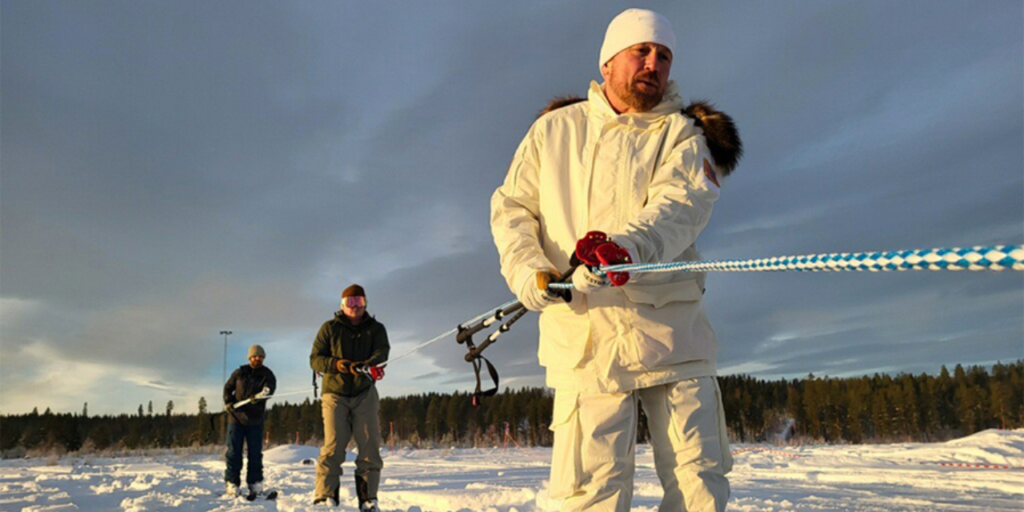Researchers at MIT created a fibre computer and connected multiple of them to create a garment that can recognise physical activity.

What if the clothing you wear had health benefits?
In the shape of an elastic fibre, MIT researchers have created an autonomous programmable computer that may track physical activity and health conditions and instantly notify the wearer of any possible health hazards. According to the researchers, clothing that contained the fibre computer was machine washable, comfy, and the fibres were hardly noticeable to the wearer.
Fabrics and clothing have the advantage of being in contact with wide parts of the body near key organs, unlike on-body monitoring devices known as “wearables,” which are positioned at a single spot like the wrist, finger, or chest. They so offer a singular chance to quantify and comprehend human physiology and health. Sensors, a microcontroller, digital memory, Bluetooth modules, optical communications, and a battery are among the microdevices that make up the fibre computer.all the necessary components of a computer in a single elastic fiber.
With the fibres extending along each limb, the researchers attached four fibre computers to a top and a pair of leggings. Each independently programmable fibre computer in their tests ran a machine-learning model that was trained to identify the wearer’s activities on its own, with an average accuracy of roughly 70%. Interestingly, after the researchers gave the separate fibre computers permission to speak with one another,their collective accuracy increased to nearly 95 percent.
Every second, our bodies transmit gigabytes of data through the skin in the form of light, sound, heat, biochemicals, and electrical potentials. These signals provide information about our health, emotions, and activities. Regretfully, the most of it, if not all of it, is absorbed and subsequently lost in our clothing. Wouldn’t it be fantastic if we could train clothing to record, examine, store, and share this crucial data in the form of insightful data on activity and health? According to Yoel Fink, a professor of materials science and engineering at MIT, a lead investigator at the Institute for Soldier Nanotechnologies (ISN) and the Research Laboratory of Electronics (RLE), and the senior author of a publication on the study that was published in Nature today.
There will soon be a major real-world test of the fibre computer’s ability to comprehend medical problems and aid in damage prevention. Service men from the U.S. Army and Navy will travel 1,000 km during a month-long winter research expedition to the Arctic, where temperatures typically hover around -40 degrees Fahrenheit. On this mission, known as Musk Ox II, dozens of base layer merino mesh shirts equipped with fibre computers will provide real-time data on the activity and health of the participants.
Fibre computers will enable us to run applications and access important safety and health services from basic everyday clothing in the not-too-distant future. With our colleagues in the U.S. Army, Navy, and DARPA, we are thrilled to see glimmers of this future in the impending Arctic mission. It’s a privilege and an honour to help keep our service personnel safe in the most hostile settings,” Fink says.
Co-lead authors John Joannopoulos, the Francis Wright Professor of Physics at MIT and director of the Institute for Soldier Nanotechnologies, Henry Cheung MEng ’23, Syamantak Payra ’22, a graduate student at Stanford University, and Nikhil Gupta, a materials science and engineering graduate student at MIT, as well as other faculty members from MIT, Rhode Island School of Design, and Brown University, join him on the paper.
Focus on fibre
The fibre computer, which was mostly funded by ISN, is the culmination of over ten years of effort in the RLE’s Fibers@MIT lab. In earlier studies, the researchers showed how to include sensors, memory units, optical diodes, semiconductor devices, and elastic electrical contacts into fibres that could be woven into clothing and fabrics.
However, due to the way we were creating it, we ran across a barrier regarding the intricacy of the gadgets we could integrate into the fibre. The entire approach has to be reconsidered. In order to mirror the qualities of traditional fabrics, we also needed to make it supple and elastic,” Gupta says.
The geometric mismatch between a cylindrical fibre and a planar chip is one of the difficulties that researchers have overcome. Because complicated microdevices include many pads, it became more and more difficult to find space to reliably attach each wire, making the process of connecting wires to tiny, conductive patches, or pads, on the outside of each planar microdevice challenging and prone to failure.
In this innovative design, the researchers use a flexible circuit board known as an interposer, which they wrapped into a cylinder, to transfer each microdevice’s 2D pad alignment to a 3D arrangement. This is referred to as the “maki” design. After that, they link all the parts by fastening four different wires to the “maki” roll’s sides.
According to Gupta, “this development was essential to our ability to integrate higher functionality computing components into the fibre, such as the microcontroller and Bluetooth sensor.”
This versatile folding technique could be used with a variety of microelectronic devices, enabling them to incorporate additional functionality.
In addition, the researchers fabricated the new fiber computer using a type of thermoplastic elastomer that is several times more flexible than the thermoplastics they used previously. This material enabled them to form a machine-washable, elastic fiber that can stretch more than 60 percent without failure.
They fabricate the fiber computer using a thermal draw process that the Fibers@MIT group pioneered in the early 2000s. The process involves creating a macroscopic version of the fiber computer, called a preform, that contains each connected microdevice.
This preform is hung in a furnace, melted, and pulled down to form a fiber, which also contains embedded lithium-ion batteries so it can power itself.
“A former group member, Juliette Marion, figured out how to create elastic conductors, so even when you stretch the fiber, the conductors don’t break. We can maintain functionality while stretching it, which is crucial for processes like knitting, but also for clothes in general,” Gupta says.
Bring out the vote
Once the fiber computer is fabricated, the researchers use a braiding technique to cover the fiber with traditional yarns, such as polyester, merino wool, nylon, and even silk.
In addition to gathering data on the human body using sensors, each fiber computer incorporates LEDs and light sensors that enable multiple fibers in one garment to communicate, creating a textile network that can perform computation.
Each fiber computer also includes a Bluetooth communication system to send data wirelessly to a device like a smartphone, which can be read by a user.
The researchers leveraged these communication systems to create a textile network by sewing four fiber computers into a garment, one in each sleeve. Each fiber ran an independent neural network that was trained to identify exercises like squats, planks, arm circles, and lunges.
“What we found is that the ability of a fiber computer to identify human activity was only about 70 percent accurate when located on a single limb, the arms or legs. However, when we allowed the fibers sitting on all four limbs to ‘vote,’ they collectively reached nearly 95 percent accuracy, demonstrating the importance of residing on multiple body areas and forming a network between autonomous fiber computers that does not need wires and interconnects,” Fink says.
Moving forward, the researchers want to use the interposer technique to incorporate additional microdevices.
Arctic insights
In February, a multinational team equipped with computing fabrics will travel for 30 days and 1,000 kilometers in the Arctic. The fabrics will help keep the team safe, and set the stage for future physiological “digital twinning” models.
“As a leader with more than a decade of Arctic operational experience, one of my main concerns is how to keep my team safe from debilitating cold weather injuries — a primary threat to operators in the extreme cold,” says U.S. Army Major Mathew Hefner, the commander of Musk Ox II. “Conventional systems just don’t provide me with a complete picture. We will be wearing the base layer computing fabrics on us 24/7 to help us better understand the body’s response to extreme cold and ultimately predict and prevent injury.”
Karl Friedl, U.S. Army Research Institute of Environmental Medicine senior research scientist of performance physiology, noted that the MIT programmable computing fabric technology may become a “gamechanger for everyday lives.”
“Imagine near-term fiber computers in fabrics and apparel that sense and respond to the environment and to the physiological status of the individual, increasing comfort and performance, providing real-time health monitoring and providing protection against external threats. Soldiers will be the early adopters and beneficiaries of this new technology, integrated with AI systems using predictive physiological models and mission-relevant tools to enhance survivability in austere environments,” Friedl says.
“The convergence of classical fibers and fabrics with computation and machine learning has only begun. We are exploring this exciting future not only through research and field testing, but importantly in an MIT Department of Materials Science and Engineering course ‘Computing Fabrics,’ taught with Professor Anais Missakian from the Rhode Island School of Design,” adds Fink.
This research was supported, in part, by the U.S. Army Research Office Institute for Soldier Nanotechnology (ISN), the U.S. Defense Threat Reduction Agency, the U.S. National Science Foundation, the Fannie and John Hertz Foundation Fellowship, the Paul and Daisy Soros Foundation Fellowship for New Americans, the Stanford-Knight Hennessy Scholars Program, and the Astronaut Scholarship Foundation.
